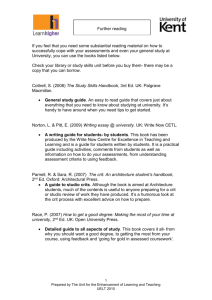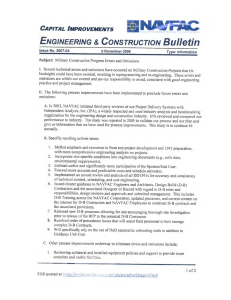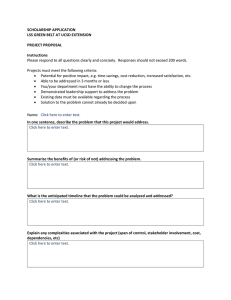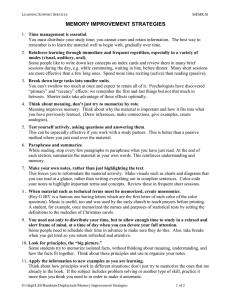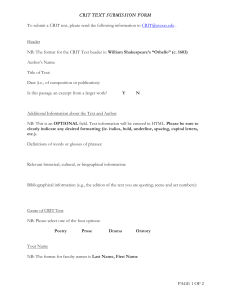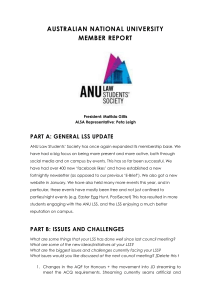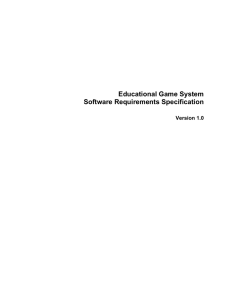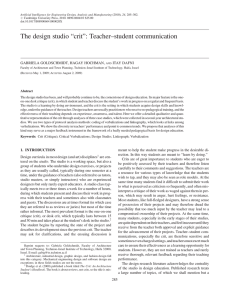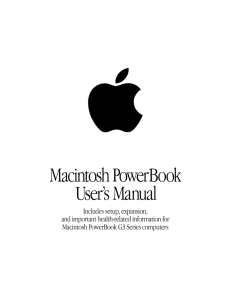Critical Thinking What is Critical Thinking?
advertisement
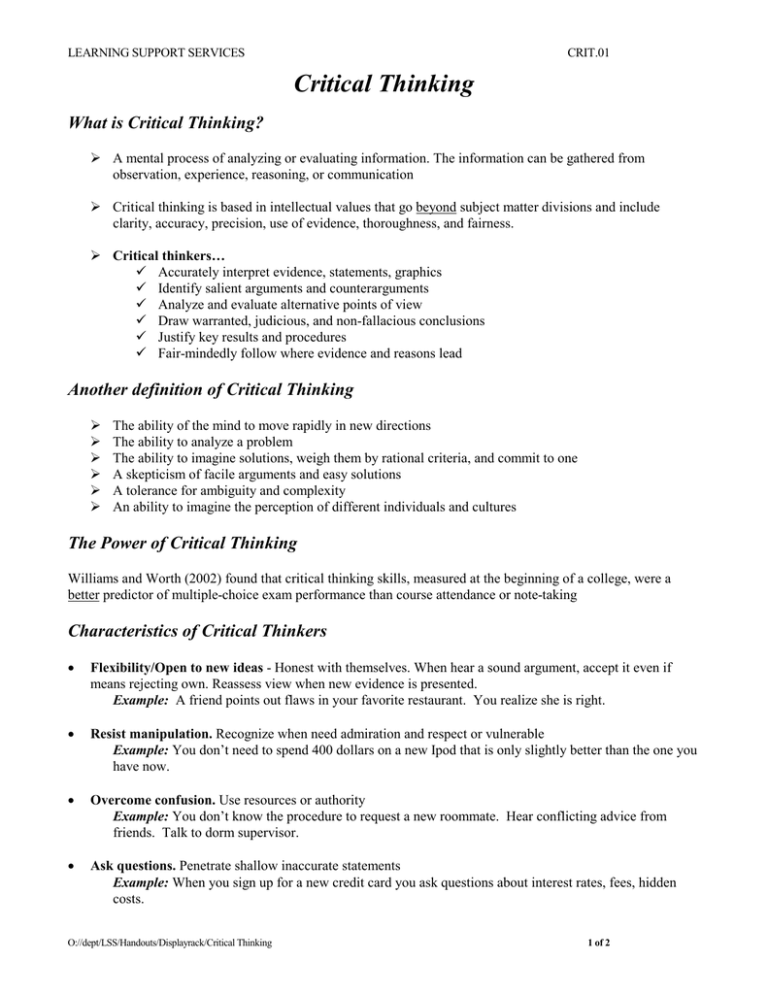
LEARNING SUPPORT SERVICES CRIT.01 Critical Thinking What is Critical Thinking? A mental process of analyzing or evaluating information. The information can be gathered from observation, experience, reasoning, or communication Critical thinking is based in intellectual values that go beyond subject matter divisions and include clarity, accuracy, precision, use of evidence, thoroughness, and fairness. Critical thinkers… Accurately interpret evidence, statements, graphics Identify salient arguments and counterarguments Analyze and evaluate alternative points of view Draw warranted, judicious, and non-fallacious conclusions Justify key results and procedures Fair-mindedly follow where evidence and reasons lead Another definition of Critical Thinking The ability of the mind to move rapidly in new directions The ability to analyze a problem The ability to imagine solutions, weigh them by rational criteria, and commit to one A skepticism of facile arguments and easy solutions A tolerance for ambiguity and complexity An ability to imagine the perception of different individuals and cultures The Power of Critical Thinking Williams and Worth (2002) found that critical thinking skills, measured at the beginning of a college, were a better predictor of multiple-choice exam performance than course attendance or note-taking Characteristics of Critical Thinkers • Flexibility/Open to new ideas - Honest with themselves. When hear a sound argument, accept it even if means rejecting own. Reassess view when new evidence is presented. Example: A friend points out flaws in your favorite restaurant. You realize she is right. • Resist manipulation. Recognize when need admiration and respect or vulnerable Example: You don’t need to spend 400 dollars on a new Ipod that is only slightly better than the one you have now. • Overcome confusion. Use resources or authority Example: You don’t know the procedure to request a new roommate. Hear conflicting advice from friends. Talk to dorm supervisor. • Ask questions. Penetrate shallow inaccurate statements Example: When you sign up for a new credit card you ask questions about interest rates, fees, hidden costs. O://dept/LSS/Handouts/Displayrack/Critical Thinking 1 of 2 LEARNING SUPPORT SERVICES CRIT.01 • Base judgments on evidence, particularly if recognize personal bias. Identify conflicting evidence. Example: Your brother’s Apple powerbook is attractive but when buying a new laptop you choose the one with the software you need for your coursework. Balance their thinking. Truth is complex in issues / always look at both sides / ponder possible meanings Example: Do you want a close small apartment or a distant large apartment? • Look for connections between subjects. Cannot compartmentalize concepts and strategies Example: Are psychology and chemistry alike? • Are intellectually independent. Seek out ideas from others, then make own judgments Example: Choosing a major, joining a sorority Steps for Evaluating Written Material Critically 1. Understand the writer’s purpose and the main idea or argument. 2. Determine the types of support or evidence that the author presents. Facts, statistics, observations, personal experience, expert opinion, scientific research 3. Determine whether the support is relevant and is of value. Fact is known with certainty and can be proven- Supported or expert opinion is valuable - e.g. theory Opinion is an unsubstantiated belief 4. Did the conclusion follow logically from the evidence? 5. Determine the writer’s assumptions and their validity. Usually not written but accepted as true with no proof Critical Thinking and Problem Solving Problem Solving Steps 1. Identify the problem. 2. Explore different solutions to the problem. Brainstorm. Do not reject any ideas at this time. 3. Write down pros and cons for each solution. 4. What are the important things to keep in mind when choosing a solution? 5. Choose a solution to the problem. 6. What are limitations of your solution? 7. What will be the first step in implementing your solution? Problems: A. What is the best way to increase the number of student parking spots at the University of Houston? B. If you had 100,000 dollars to use for a drug education program in HISD, what would be the best way to spend it? Source Unknown 7/2008 O://dept/LSS/Handouts/Displayrack/Critical Thinking 2 of 2
